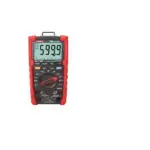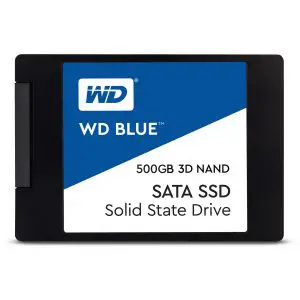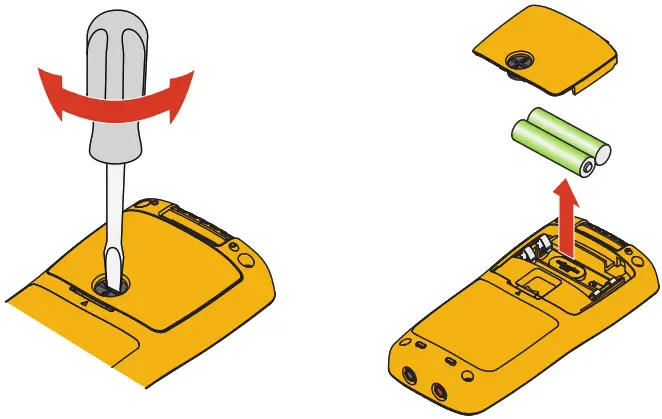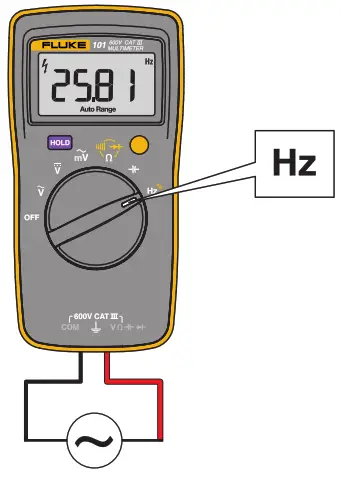

101
Digital Multimeter
Users Manual
July 2013, Rev. 1, 10/15
© 2013-2015 Fluke Corporation. All rights reserved. Specifications are subject to change without notice.
All product names are trademarks of their respective companies.
LIMITED WARRANTY AND LIMITATION OF LIABILITY
This Fluke product will be free from defects in material and workmanship for one year from the date of purchase. This warranty does not cover fuses, disposable batteries, or damage from accident, neglect, misuse, alteration, contamination, or abnormal conditions of operation
or handling. Resellers are not authorized to extend any other warranty on Fluke’s behalf. To obtain service during the warranty period, contact your nearest Fluke authorized service center to obtain return authorization information, then send the product to that Service Center with a description of the problem.
THIS WARRANTY IS YOUR ONLY REMEDY. NO OTHER WARRANTIES, SUCH AS FITNESS FOR A PARTICULAR PURPOSE, ARE EXPRESSED OR IMPLIED. FLUKE IS NOT LIABLE FOR ANY SPECIAL, INDIRECT, INCIDENTAL, OR CONSEQUENTIAL DAMAGES OR LOSSES, ARISING FROM ANY CAUSE OR THEORY. Since some states or countries do not allow the exclusion or limitation of an implied warranty or of incidental or consequential damages, this limitation of liability may not apply to you.
| Fluke Corporation P.O. Box 9090 Everett, WA 98206-9090 U.S.A. |
Fluke Europe B.V. P.O. Box 1186 5602 BD Eindhoven The Netherlands |
Introduction
The Fluke 101 Multimeter (the Product) is a 6000-count instrument.
The Product is battery-powered with a digital display.
How to Contact Fluke
To contact Fluke, call one of the following telephone numbers:
- Technical Support USA: 1-800-44-FLUKE (1-800-443-5853)
- Calibration/Repair USA: 1-888-99-FLUKE (1-888-993-5853)
- Canada: 1-800-36-FLUKE (1-800-363-5853)
- Europe: +31-402-675-200
- Japan: +81-3-6714-3114
- Russia: +8-495-664-75-12
- Singapore: +65-6799-5566
- Anywhere in the world: +1-425-446-5500 Or, visit Fluke’s website at www.fluke.com.
To register your product, visit http://register.fluke.com.
To view, print, or download the latest manual supplement, visit http://us.fluke.com/usen/support/manuals.
Safety Information
The Fluke 101 complies with IEC 61010-1 CAT III 600 V measurement category. See General Specifications.
A Warning identifies conditions and procedures that are dangerous to the user. A Caution identifies conditions and procedures that could cause damage to the Product or the equipment under test.
![]() Warning
Warning
To prevent possible electrical shock, fire, or personal injury:
- Carefully read all instructions.
- Read all safety information before you use the Product.
- Use the Product only as specified, or the protection supplied by the Product can be compromised.
- Do not use the Product around explosive gas, vapor, or in damp or wet environments.
- Do not use the Product if it is damaged.
- Disable the Product if it is damaged.
- Do not use the Product if it operates incorrectly.
- Examine the case before you use the Product. Look for cracks or missing plastic. Carefully look at the insulation around the terminals.
- Use only correct measurement category (CAT), voltage, and amperage-rated probes, test leads, and adapters for the measurement.
- Measure a known voltage first to make sure that the Product operates correctly.
- Do not use test leads if they are damaged. Examine the test leads for damaged insulation and measure a known voltage.
- Do not apply more than the rated voltage, between the terminals or between each terminal and earth ground.
- Do not use the HOLD function to measure unknown potentials. When HOLD is turned on, the display does not change when a different potential is measured.
- Do not touch voltages >30 V ac RMS, 42 V ac peak, or 60 V dc.
- Keep fingers behind the finger guards on the probes.
- Remove all probes, test leads, and accessories before the battery door is opened.
- Do not exceed the Measurement Category (CAT) rating of the lowest rated individual component of a Product, probe, or accessory.
- Remove the input signals before you clean the Product.
- Have an approved technician repair the Product.
- Remove the batteries if the Product is not used for an extended period of time, or if stored in temperatures above 50 °C. If the batteries are not removed, battery leakage can damage the Product.
- Replace the batteries when the low battery indicator shows to prevent incorrect measurements.
- Use only specified replacement parts.
- Do not use test leads if they are damaged. Examine the test leads for damaged insulation, exposed metal, or if the wear indicator shows. Check test lead continuity.
- Connect the common test lead before the live test lead and remove the live test lead before the common test lead.
- Do not use in CAT III or CAT IV environments without the protective cap installed. The protective cap decreases the exposed probe metal to <4 mm.
This decreases the possibility of arc flash from short circuits.
Table 1 is a list of the symbols used on the Product and in this manual.
Table 1. Symbols
| Consult user documentation. |  |
Earth | |
 |
WARNING. RISK OF DANGER. |  |
Capacitance |
 |
WARNING. HAZARDOUS VOLTAGE. Risk of electric shock. |  |
Diode |
 |
AC (Alternating Current) |  |
Both direct and alternating current |
 |
DC (Direct Current) |  |
Battery |
| Conforms to relevant South Korean EMC Standards |  |
Certified by TOV SOD Product Service. | |
| Conforms to European Union directives. |  |
Certified by CSA Group to North American safety standards. |
Table 1. Symbols (cont.)
 |
Measurement Category II is applicable to test and measuring circuits connected directly to utilization points (socket outlets and similar points) of the low-voltage MAINS installation. |
 |
Measurement Category III is applicable to test and measuring circuits connected to the distribution part of the building’s low-voltage MAINS installation. |
 |
Measurement Category IV is applicable to test and measuring circuits connected at the source of the building’s low-voltage MAINS installation. |
 |
This product complies with the WEEE Directive marking requirements. The affixed label indicates that you must not discard this electrical/electronic product in domestic household waste. Product Category: With reference to the equipment types in the WEEE Directive Annex I, this product is classed as category 9 “Monitoring and Control Instrumentation” product. Do not dispose of this product as unsorted municipal waste. |
Instrument Overview
Terminals
 hkm01.eps |
|
| Item | Description |
| 1 | Common (return) terminal for all measurements. |
| 2 | Input terminal for all measurements. |
Display
Figure 1 and Table 2 show the items on the Product display.
 Figure 1. Display
Figure 1. Display
Table 2. Display
| Item | Description | Item | Description |
| 1 | High voltage | 8 | Frequency is selected |
| 2 | Display Hold is enabled | 9 | Farads |
| 3 | Continuity selected | 10 | Millivolts |
| 4 | Diode test is selected | 11 | Amps or volts |
| 5 | Duty Cycle is selected | 12 | Dc or ac voltage or current |
| 6 | Decimal prefix | 13 | Auto Range mode is enabled |
| 7 | Ohms is selected | 14 | The battery is low and should be changed |
Auto Power Off
The Product automatically powers off after 20 minutes of inactivity.
To restart the Product, turn the rotary switch back to the OFF position and then to a necessary position.
To disable the Auto Power Off function, hold down the YELLOW button when turning on the Product, until shows on the display.
Measurements
Data Hold
![]() Warning
Warning
To prevent possible electrical shock, fire or personal injury, do not use the HOLD function to measure unknown potentials. When HOLD is turned on, the display does not change when a different potential is measured.
To hold the present reading, push  . Push
. Push  again to resume normal operation.
again to resume normal operation.
Measure AC and DC Voltage
To measure ac and dc voltage:
- Choose ac or dc by turning the rotary switch to
 ,
,  , or
, or  .
. - Connect the red test lead to the
 terminal and the black test lead to the COM terminal.
terminal and the black test lead to the COM terminal. - Measure the voltage by touching the probes to the correct test points of the circuit.
- Read the measured voltage on the display.

Figure 2. Measure AC and DC Voltage
Measure Resistance
- Turn the rotary switch to
 . Make sure power is disconnected from the circuit to be measured.
. Make sure power is disconnected from the circuit to be measured. - Connect the red test lead to the
 terminal and the black test lead to the COM terminal.
terminal and the black test lead to the COM terminal. - Measure the resistance by touching the probes to the desired test points of the circuit.
- Read the measured resistance on the display.
Test for Continuity
With the resistance mode selected, push the YELLOW button once to activate the continuity mode. If the resistance is <70 Ω, the beeper sounds continuously, designating a short circuit.
If the Product reads ![]() , the circuit is open.
, the circuit is open.

Figure 3. Measure Resistance/Continuity
Test Diodes
- Turn the rotary switch to
 .
. - Push the YELLOW button twice to activate the diode test mode.
- Connect the red test lead to the
 terminal and the black test lead to the COM terminal.
terminal and the black test lead to the COM terminal. - Connect the red probe to the anode and the black test lead to the cathode of the diode being tested.
- Read the forward bias voltage value on the display.
- If the polarity of the test leads is reversed with diode polarity, the display reading shows
 . This can be used to distinguish the anode and cathode sides of a diode.
. This can be used to distinguish the anode and cathode sides of a diode.
Measure Capacitance
- Turn the rotary switch to
 .
. - Connect the red test lead to the
 terminal and the black test lead to the COM terminal.
terminal and the black test lead to the COM terminal. - Touch the probes to the capacitor leads.
- Let the reading stabilize (up to 18 seconds).
- Read the capacitance value on the display.
Measure Frequency and Duty Cycle
To measure frequency:
- Turn the rotary switch to Hz% .
- Connect the red test lead to the
 terminal and the black test lead to COM terminal.
terminal and the black test lead to COM terminal. - Measure frequency by touching the probes to the correct test points of the circuit.
- Read the frequency on the display.
To measure duty cycle:
- Turn the rotary switch to Hz% .
- Push the YELLOW button to switch to the duty cycle function.
- Connect the red test lead to the
 terminal and the black test lead to COM terminal.
terminal and the black test lead to COM terminal. - Measure duty cycle by touching the probes to the correct test points of the circuit.
- Read the percent of duty cycle on the display.

Figure 4. Measure Frequency/Duty Cycle
Maintenance
Beyond replacing batteries, do not attempt to repair or service the Product unless you are qualified to do so and have the relevant calibration, performance test, and service instructions. The recommended calibration cycle is 12 months.
![]() Warning
Warning
To prevent possible electrical shock, fire, or personal injury:
- Remove the input signals before you clean the Product.
- Use only specified replacement parts.
- Have an approved technician repair the Product.
For safe operation and maintenance of the Product, repair the Product before use if the batteries leak.
General Maintenance
Periodically wipe the case with a damp cloth and mild detergent. Do not use abrasives or solvents. Dirt or moisture in the terminals can affect readings.
To clean the terminals:
- Turn the Product off and remove the test leads.
- Shake out any dirt that may be in the terminals.
- Soak a new swab with isopropyl alcohol and work around the inside of each input terminal.
- Use a new swab to apply a light coat of fine machine oil to the inside of each terminal.
Replace Batteries
To replace the batteries, see Figure 5.

Figure 5. Replace Batteries
Service and Parts
If the Product fails, first check the batteries. Then, review this manual to make sure you are operating the Product correctly.
Replacement parts are:
| Item | Fluke Part Number |
| Batteries | 2838018 |
| Battery door | 4319659 |
| Test leads TL175 | 4306653 |
| Screws | 4320657 |
General Specifications
Maximum voltage between any terminal
and Earth Ground ………………………………………. 600 V
Display (LCD) …………………………………………….. 6000 counts, update rate 3/sec
Battery Type ………………………………………………. 2 AAA, NEDA 24A, IEC LR03
Battery Life ………………………………………………… 200 hours minimum
Temperature
Operating ……………………………………………….. 0 °C to 40 °C
Storage ………………………………………………….. -30 °C to 60 °C
Relative Humidity
Operating Humidity ………………………………….. Non-condensing when <10 °C;
≤90 % at 10 °C to 30 °C;
≤75 % at 30 °C to 40 °C (Non-condensing)
Operating Humidity, 40 MΩ Range …………….. ≤80 % at 10 °C to 30 °C;
≤70 % at 30 °C to 40 °C (Non-condensing)
Altitude
Operating ……………………………………………….. 2000 m
Storage ………………………………………………….. 12,000 m
Temperature Coefficient …………………………….. 0.1 X (specified accuracy) / °C (<18 °C or >28 °C)
Size (HxWxL) …………………………………………….. 130 mm x 65 mm x 27 mm
Weight ………………………………………………………. 160 g
IP Rating ……………………………………………………. IEC 60529: IP 40
Safety ……………………………………………………….. IEC 61010-1: Pollution Degree 2,
IEC 61010-2-033: CAT III 600 V
Electromagnetic Compatibility (EMC)
International ……………………………………………. IEC 61326-1: Portable, IEC 61326-2-2
CISPR 11: Group 1, Class A
Group 1: Equipment has intentionally generated and/or uses conductively coupled radiofrequency energy that is necessary for the internal function of the equipment itself.
Class A: Equipment is suitable for use in all establishments other than domestic and those directly connected to a low-voltage power supply network that supplies buildings used for domestic purposes.
There may be potential difficulties in ensuring electromagnetic compatibility in other environments due to conducted and radiated disturbances.
Emissions that exceed the levels required by CISPR 11 can occur when the equipment is connected to a test object. The equipment may not meet the immunity requirements of this standard when test leads and/or test probes are connected.
Korea (KCC) …………………………………………… Class A Equipment (Industrial Broadcasting &
Communication Equipment)
Class A: Equipment meets requirements for industrial electromagnetic wave equipment and the seller or user should take notice of it. This equipment is intended for use in business environments and not to be used in homes.
USA (FCC) …………………………………………….. 47 CFR 15 subpart B. This product is considered an exempt device per clause 15.103.
Accuracy Specifications
Accuracy is specified for 1 year after calibration, at an operating temperature range of 18 °C to 28 °C, relative humidity at 0 % to 90 %. Accuracy specifications take the form of: ±([% of Reading] + [Number of Least Significant Digits])
| Function | Range | Resolution | Accuracy |
AC Volts [1] (40 Hz to 500 Hz) |
6.000 V
60.00 V 600.0 V |
0.001 V
0.01 V 0.1 V |
1.0 % + 3 |
DC Volts |
6.000 V
60.00 V 600.0 V |
0.001 V
0.01 V 0.1 V |
0.5 % + 3 |
| AC Millivolts [1] (40 Hz to 500 Hz)
|
600.0 mV | 0.1 mV | 3.0 % + 3 |
| Diode Test
|
2.000 V | 0.001 V | 10 % |
| [1] All AC, Hz, and duty cycles are specified from 1 % to 100 % of the range. Inputs below 1 % of the range are not specified. [2] Typically, the open-circuit test voltage is 2.0 V and the short circuit current is <0.6 mA. |
|||
| Function | Overload Protection |
Input Impedance (Nominal) |
Common Mode Rejection Ratio |
Normal Mode Rejection Ratio |
| AC Volts | 600 V(1) | >10 MQ <100 pF | >60 dB at dc, 50 Hz or 60 Hz |
— |
| AC Millivolts | 600 mV | >1 M, <100 pF | >80 dB at dc, 50 Hz or 60 Hz |
— |
| DC Volts | 600 V(11 | >10 MI) <100 pF | >100 dB at 50 Hz or 60 Hz >60 dB at |
50 Hz or 60 Hz |
| [1] 6 x 105 V Hz Max. | ||||
| Function | Range | Resolution | Accuracy |
| Resistance |
400.0 Ω
4.000 kΩ 40.00 kΩ 400.0 kΩ 4.000 MΩ 40.00 MΩ |
0.1 Ω
0.001 kΩ 0.01 kΩ 0.1 kΩ 0.001 MΩ 0.01 MΩ |
0.5 % + 3
0.5 % + 2 0.5 % + 2 0.5 % + 2 0.5 % + 2 1.5 % + 3 |
| Capacitance [1]
|
50.00 nF
500.0 nF 5.000 μF 50.00 μF 500.0 μF 1000 μF |
0.01 nF
0.1 nF 0.001 μF 0.01 μF 0.1 μF 1 μF |
2 % + 5
2 % + 5 5 % + 5 5 % + 5 5 % + 5 5 % + 5 |
| Frequency [2] Hz (10 Hz – 100 kHz) |
50.00 Hz
500.0 Hz 5.000 kHz 50.00 kHz 100.0 kHz |
0.01 Hz
0.1 Hz 0.001 kHz 0.01 kHz 0.1 kHz |
0.1 % + 3 |
| Duty Cycle [2] | 1 % to 99 % | 0.1 % | [3]
1 % typical |
| [1] Specifications do not include errors due to test lead capacitance and capacitance floor (maybe up to 1.5 nF in th50 nF range). [2] All AC, Hz, and duty cycles are specified from 1 % to 100 % of the range. Inputs below 1 % of the range are not specified.[3] Typical means when the frequency is at 50 Hz or 60 Hz and the duty cycle is between 10 % and 90 %. |
|||
